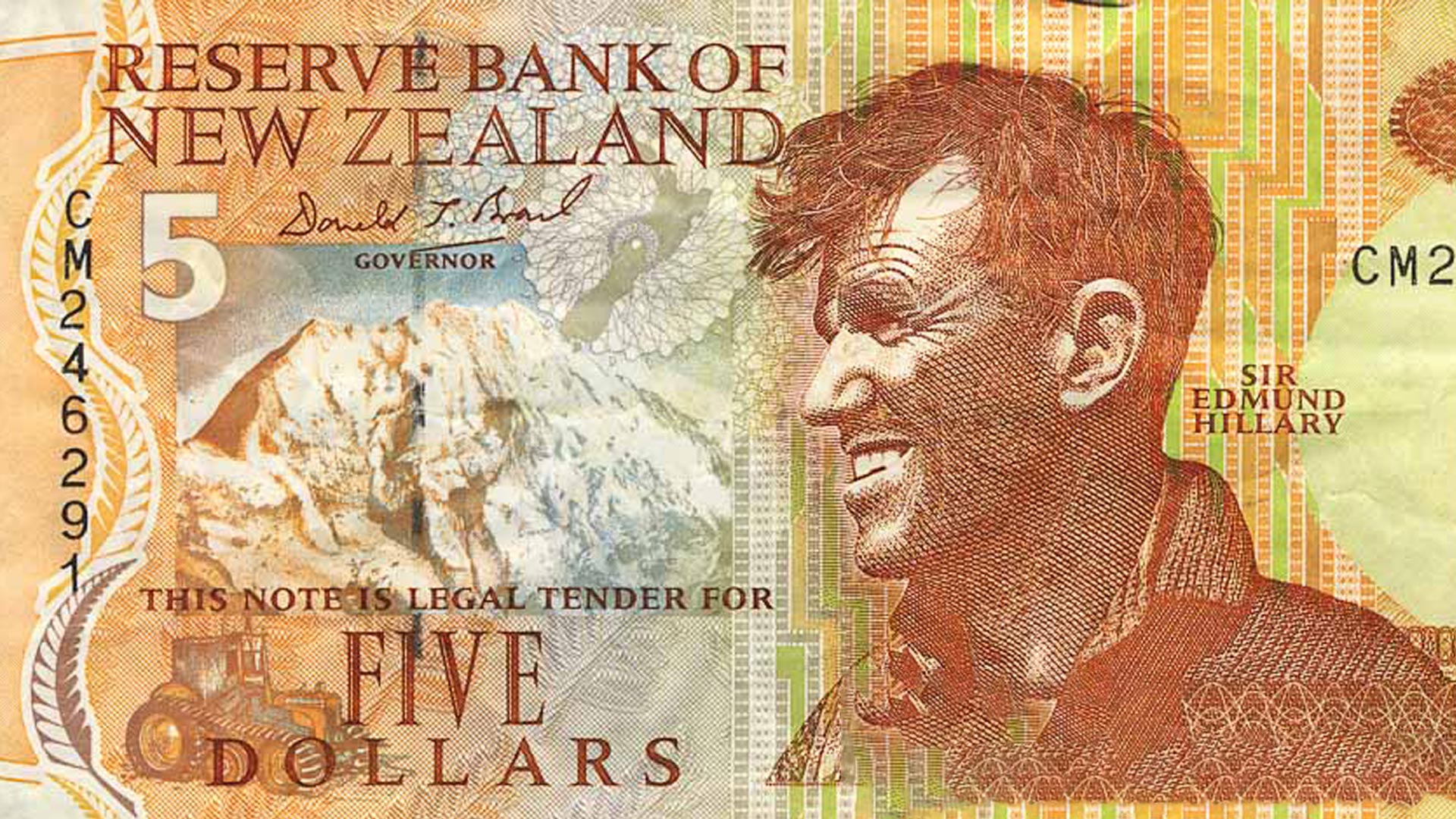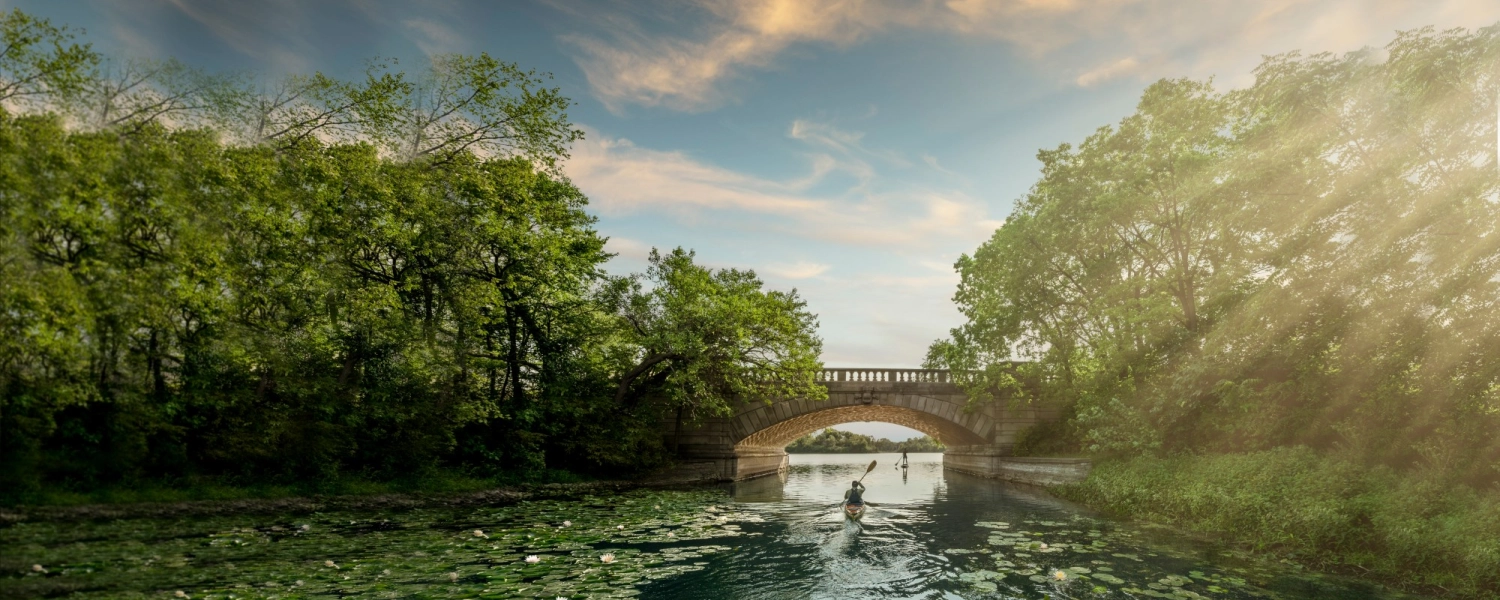- Details
- Written by: Jack Clayton
Born on the 20th of July 1919, in Auckland New Zealand, Sir Edmund Percival Hillary cemented his place in the pantheon of mountaineers for all eternity when alongside Tenzing Norgay he became the first person to summit Mount Everest (the world’s highest mountain) on the 29th of May 1953.
Looking beyond Hillary’s obviously very impressive Everest achievement however, how much do many of us really know about the legendary mountain man? We’d wager not a lot, hence why we’ve decided to put together this Edmund Hillary biography of sorts. It’s basically everything you could ever want know about him, compiled together neatly in one place.The Early Life of Edmund Hillary
Edmund Hillary’s parents were Percival Augustus and Gertrude Hillary. His father had served in the Gallipoli campaign with the 15th Regiment (North Auckland) and had been discharged from the Army in 1916 on the grounds of being “medically unfit.” Percy, as he was known to friends and family, married Gertrude after returning to New Zealand. For being a returning wartime soldier, in 1920 Percy was allocated eight acres of land in Tuakau – just south of Auckland. Before the war, Percy had been a journalist and Edmund’s father quickly returned to this line of work becoming editor of the weekly Tuakau District News. He was also a keen beekeeper.“Edmund’s love for climbing… began on a school trip to Mount Ruapehu”The young Edmund, who went on to study at Auckland Grammar School, had one sister and one brother; June, born in 1917, and Rex, born in 1920. Due to the distances involved in getting to and from Auckland Grammar School, an hour and 40 minute journey each way (via bicycle and train), Edmund initially felt unable to take part in after-school activities and integrate with his classmates. He grew in confidence however when the family moved closer to the Grammar School, in 1935, taking up boxing and eventually growing to 6ft 2 inches. He’d been on the small side as a youngster. Edmund’s love for climbing, and the thing that set the ball in motion for his Everest ascent many years later, began on a school trip to Mount Ruapehu he made when he was 16. From that moment on, Edmund showed far more interest in tramping than studying (tramping is New Zealand’s word for long-distance hiking). During the course of his formative years, Edmund would regularly tell people that he “wanted to see the world.” Following two unsuccessful years studying maths and science at Auckland University College, he officially gave up on formal education in 1938.
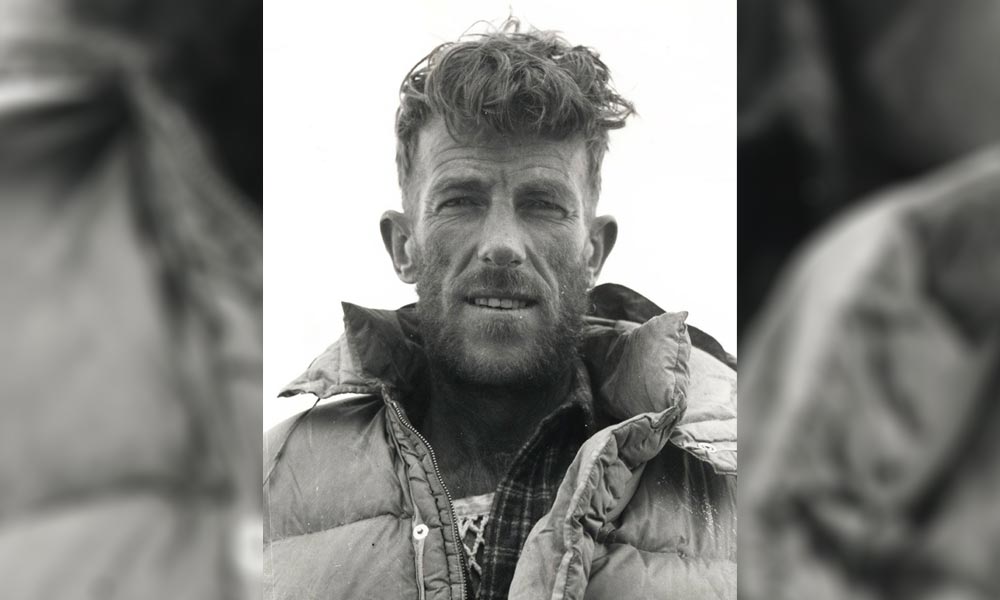 After turning his back on education, Edmund got into beekeeping with his father and brother. Attending to 1600 hives, and getting between 12 to 100 bee-stings daily, his life fell into a pattern of summertime beekeeping and wintertime climbing. Speaking of bees, Edmund’s father Percy edited a journal called ‘The N.Z Honeybee’ while his mother Gertrude became famous (well, as famous as you can get in beekeeping circles) for breeding and selling queen bees.
In 1938, Edmund and his family became foundation members of Herbert Sutcliffe’s “Radiant Living” life philosophy movement. In 1939, his mother became “Radiant Living” secretary and in 1941 Edmund sat an exam to become a Radiant Living teacher. He passed with a score of 100%.
Of his five year association with the movement, Edmund said “I learned to speak confidently from the platform; to think more freely on important topics; to mix more readily with a wide variety of people.” It was also during this period of his life that he joined the Radiant Living Tramping Club, and took his love for the outdoors to the next level through exploration of the Waitakere Ranges.
In 1939, Edmund completed his first major climb by reaching the summit of Mount Olliver (near Aoraki / Mount Cook) in the Southern Alps. With the sport of climbing came new friends in the form of Harry Ayres and George Lowe. Of these friendships, Edmund said they were “the first real friends I’d ever had.”
After turning his back on education, Edmund got into beekeeping with his father and brother. Attending to 1600 hives, and getting between 12 to 100 bee-stings daily, his life fell into a pattern of summertime beekeeping and wintertime climbing. Speaking of bees, Edmund’s father Percy edited a journal called ‘The N.Z Honeybee’ while his mother Gertrude became famous (well, as famous as you can get in beekeeping circles) for breeding and selling queen bees.
In 1938, Edmund and his family became foundation members of Herbert Sutcliffe’s “Radiant Living” life philosophy movement. In 1939, his mother became “Radiant Living” secretary and in 1941 Edmund sat an exam to become a Radiant Living teacher. He passed with a score of 100%.
Of his five year association with the movement, Edmund said “I learned to speak confidently from the platform; to think more freely on important topics; to mix more readily with a wide variety of people.” It was also during this period of his life that he joined the Radiant Living Tramping Club, and took his love for the outdoors to the next level through exploration of the Waitakere Ranges.
In 1939, Edmund completed his first major climb by reaching the summit of Mount Olliver (near Aoraki / Mount Cook) in the Southern Alps. With the sport of climbing came new friends in the form of Harry Ayres and George Lowe. Of these friendships, Edmund said they were “the first real friends I’d ever had.”
Edmund Hillary During World War II
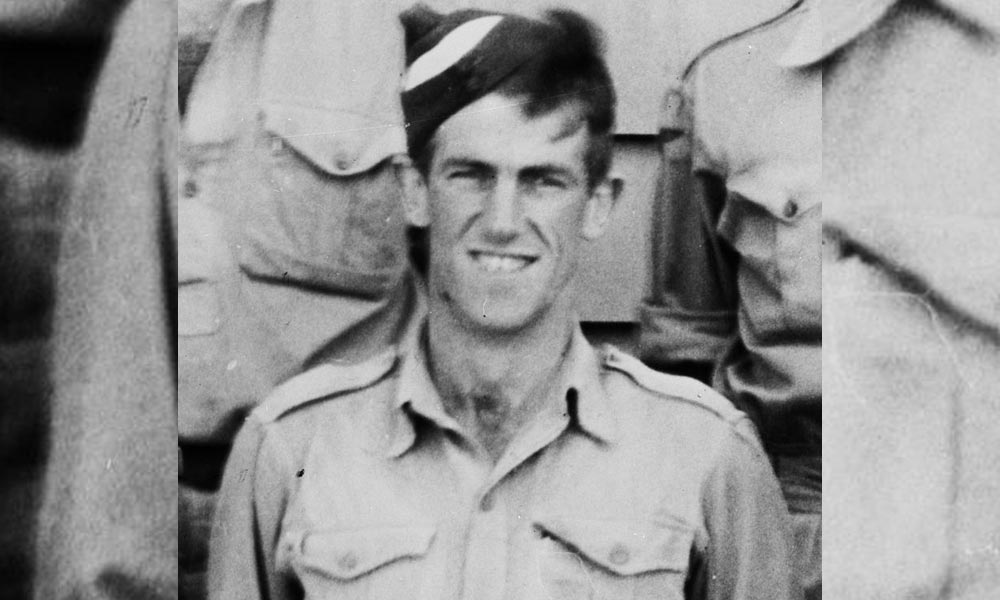 With World War II kicking off, Hillary applied to join the Royal New Zealand Air Force (RNZAF) but rapidly withdrew the application stating that he was “harassed by my religious conscience.” In 1943, with the Japanese threat in the Pacific and the introduction of conscription, Hillary joined the RNZAF as a navigator. In 1945, he was sent to Fiji and the Solomon Islands and was badly burnt in an accident.
With World War II kicking off, Hillary applied to join the Royal New Zealand Air Force (RNZAF) but rapidly withdrew the application stating that he was “harassed by my religious conscience.” In 1943, with the Japanese threat in the Pacific and the introduction of conscription, Hillary joined the RNZAF as a navigator. In 1945, he was sent to Fiji and the Solomon Islands and was badly burnt in an accident.
Hillary In The Run-Up To ‘Everest 1953’
After the war, Hillary turned his attention back to adventuring. In January 1948, Hillary was part of a team that ascended the south ridge of New Zealand’s highest mountain (Aoraki / Mount Cook). In 1951, Edmund joined up with a British reconnaissance expedition to Everest led by Eric Shipton. A year later, in 1952, he was part of a British team led by Shipton, one which included his friend George Lowe, that attempted Cho Oyu (the sixth highest mountain in the world). This particular attempt failed due to the lack of route from the Nepalese side.The 1953 Everest Expedition
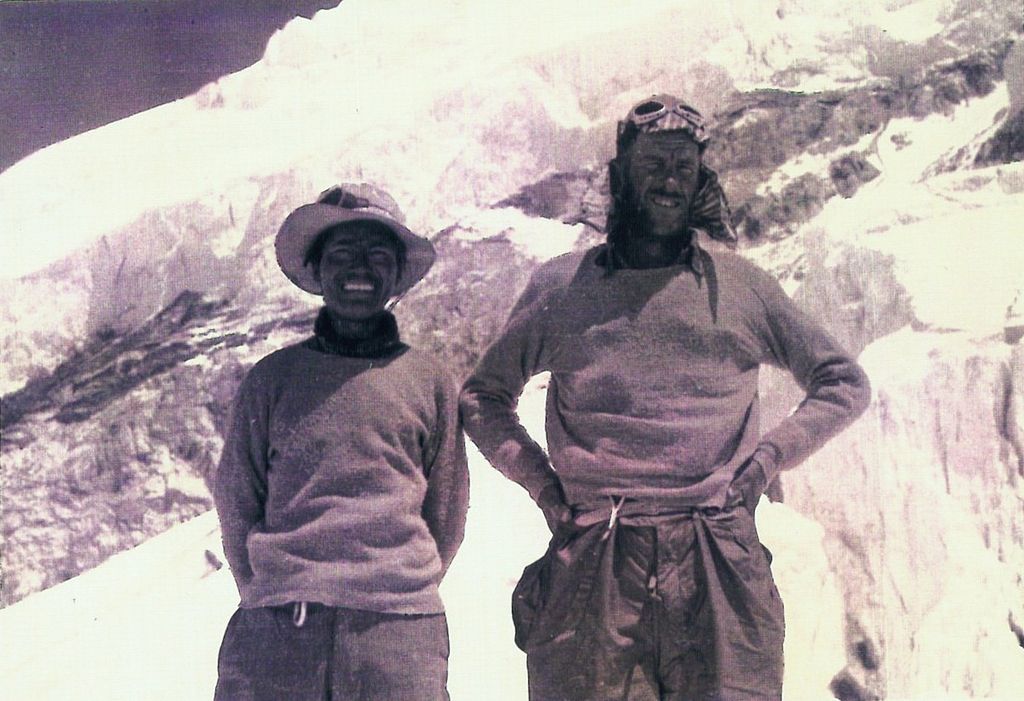
“The 1953 Everest expedition consisted of 400 people, including 362 porters, 20 Sherpa guides, and 4,500kg of baggage”In that very same year, Hillary and Lowe were invited by the Joint Himalayan Committee to take part in the 1953 British attempt of Everest. They accepted immediately. Led by Colonel John Hunt, who replaced Eric Shipton in the leadership role, the 1953 Everest expedition consisted of 400 people, including 362 porters, 20 Sherpa guides, and 4,500kg of baggage. If stories are to believed, Hillary initially objected to Hunt being put in charge of the expedition before being won over by the man’s sheer energy and determination. Hillary had planned to attempt an ascent with Lowe but Hunt decided that the two teams for the ascent would be Tom Bourddillon with Charles Evans and, of course, Edmund Hillary and Tenzing Norgay. Upon discovering this, Edmund set about forging a working friendship with Tenzing.
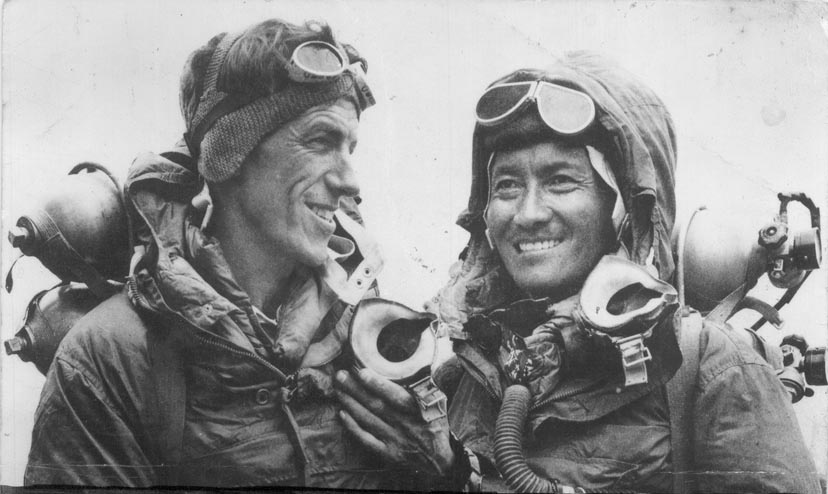
“A few more whacks with my ice-axe and Tenzing and I stood on top of Everest”The following morning, Hillary woke to find his boots had frozen solid outside the tent. Two hours later, after warming them over a stove, the boots were ready and the Tenzing Norgay – Edmund Hillary combo, each wearing 14kg backpacks, began the stage of their ascent. The final obstacle between them and the highest point on Earth was the 12-metre high rock face near the Everest summit, a face that became known as the ‘Hillary Step’. Regarding his 1953 experience with the ‘Hillary Step’, Hillary wrote: “I noticed a crack between the rock and the snow sticking to the East Face. I crawled inside and wriggled and jammed my way to the top… Tenzing slowly joined me and we moved on. I chopped steps over bump after bump, wondering what a little desperately where the top could be. Then I saw the ridge ahead dropped away to the the north and above me on the right was a rounded snow dome. A few more whacks with my ice-axe and Tenzing and I stood on top of Everest.”
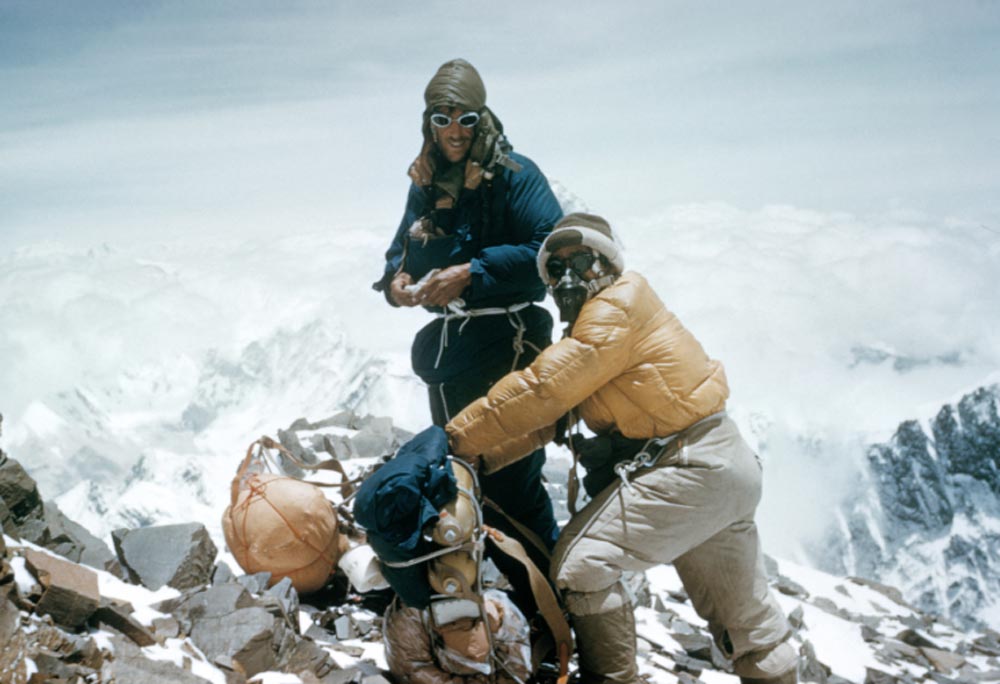 Tenzing later revealed that it was Hillary who took the first step onto the summit, with him following just behind. The pair reached the top of Everest at 11:30am. Edmund Hillary was 33 years old at the time of summiting, while Tenzing Norgay (who did not know his exact birthday) stated thereafter that his birthday was the 29th of May.
The soon-to-be most famous mountaineering double act in the world spent 15 minutes at the summit, with Hillary taking a photo of Tenzing posing with his ice-axe. There is no photo of Hillary on the summit, with the BBC at the time attributing this to Tenzing having never used a camera. However, in Tenzing’s autobiography it’s revealed that Hillary simply declined to have his picture taken.
Hillary left a cross on the summit, Tenzing some chocolates. The first person they met on the way back down was Lowe with Hillary reportedly saying to him, “Well, George, we knocked the bastard off.”
Upon returning to Nepal’s capital Kathmandu a few days later, Hilllary learned that he’d been appointed a ‘Knight Commander of the Order of the British Empire’. News of their heroics reached Britain on the day of Queen Elizabeth II’s coronation, with the press dubbing it a “coronation gift.” Tenzing received the George Medal, and the Star of Nepal from King Tribhuvan.
Tenzing later revealed that it was Hillary who took the first step onto the summit, with him following just behind. The pair reached the top of Everest at 11:30am. Edmund Hillary was 33 years old at the time of summiting, while Tenzing Norgay (who did not know his exact birthday) stated thereafter that his birthday was the 29th of May.
The soon-to-be most famous mountaineering double act in the world spent 15 minutes at the summit, with Hillary taking a photo of Tenzing posing with his ice-axe. There is no photo of Hillary on the summit, with the BBC at the time attributing this to Tenzing having never used a camera. However, in Tenzing’s autobiography it’s revealed that Hillary simply declined to have his picture taken.
Hillary left a cross on the summit, Tenzing some chocolates. The first person they met on the way back down was Lowe with Hillary reportedly saying to him, “Well, George, we knocked the bastard off.”
Upon returning to Nepal’s capital Kathmandu a few days later, Hilllary learned that he’d been appointed a ‘Knight Commander of the Order of the British Empire’. News of their heroics reached Britain on the day of Queen Elizabeth II’s coronation, with the press dubbing it a “coronation gift.” Tenzing received the George Medal, and the Star of Nepal from King Tribhuvan.
Hillary After Everest
Despite conquering the highest mountain in the world in 1953, Hillary was anything but done with going on adventures. Between 1956 and 1965, he climbed 10 more Himalayan peaks and in 1958 he reached the South Pole as part of the Commonwealth Trans-Antarctic Expedition. His party was the first to reach the Pole overland since Amundsen in 1911 and Scott in 1912. They were the first people to achieve the feat using motorised vehicles.“In 1960 Hillary was part of an expedition to search for the abominable snowman”Believe it or not, in 1960 Hillary was part of an expedition to search for the abominable snowman (aka a yeti). He’d become fascinated by the idea such a species could exist in the high places of the world and was intrigued by conversations he’d had with Tenzing – who claimed to have seen one in the Himalayas. Hillary was with the ‘abominable snowman’ expedition for five months, during which no clear evidence of their existence was found. While on the expedition, Hillary travelled to remote temples containing “Yeti scalps.” After bringing these relics back though, it turned out that two had come from bears and one from a goat antelope. After the expedition, Hillary went on the record saying “The yeti is not a strange, superhuman creature as has been imagined. We have found rational explanations for most yeti phenomena.” Over the course of a nine-month period between 1960 and 1961, Hillary went on the nine-month “Silver Hut” Expedition with, among others, Griffith Pugh. The expedition involved a prefabricated hut being carried up to 5,800m above sea level with the aim of this being to study the cardiac and pulmonary responses to a prolonged period at altitude. Here Pugh showed that Everest could be climbed without oxygen, something that was shown to be the case by mountaineering legends Reinhold Messner and Peter Habeler in their 1978 ascent. An attempt was also made to climb Makalu, the world’s fifth-highest mountain, but this ended unsuccessfully. In 1962, he appeared on the television show ‘What’s My Line?’ – a show in which a panel must guess the occupation of an individual (watch it above). In 1977, he led a jetboat expedition down the Ganges River. And between 1977 and 1979, he did the commentary aboard Antarctic sightseeing flights operated by Air New Zealand. In 1985, he accompanied none other than ‘first man on the moon’ Neil Armstrong in a small twin-engined ski plane over the Arctic Ocean before landing at the North Pole. In doing so, he became the first person in history to stand at both poles and as well as the summit of Everest. This accomplishment later became known as the Three Poles Challenge. 50 years after the founding of Scott Base, Hillary travelled to Antarctica as part of a delegation commemorating the anniversary.
Hillary’s Personal Life
On the 3rd of September 1953, Hillary married Louise Mary Rose. Despite climbing through the “Death Zone” of Everest in order to make it to the highest point on Earth, Hillary revealed that he was terrified of proposing; relying on Louise’s mother to propose on his behalf. Together, the couple had three children – Peter, born in 1954, Sarah, born in 1955, and Belinda, born in 1959. Tragedy struck in 1975 when Louise and Belinda, en-route to visit Hillary in the village Phaplu – where he was helping to build a hospital, were involved in a plane crash near Kathmandu airport shortly after take-off.“This is the only place I want to live in; this is the place I want to see out my days”In 1989 Hillary married June Mulgrew, the widow of his close friend Peter Mulgrew who died in Air New Zealand’s Mount Erebus crash of 1979. Mulgrew, an old climbing companion of Hillary, had replaced his friend on the sightseeing flight as other commitments had forced him to cancel. Peter Hillary, Edmund Hillary’s son, summited Everest in 1990. He repeated the feat in May 2002 alongside Tenzing Norgay’s son Jamling Tenzing Norgay. Hillary’s family had deep-set roots in the west coast of Auckland. Of the area, which now has a Hillary Trail named in honour of him, he once said: “That is the thing that international travel brings home to me – it’s always good to be going home. This is the only place I want to live in; this is the place I want to see out my days.”
Philanthropy and Politics
After conquering Everest, Hillary dedicated much of his life to helping the Sherpa people in any way he could. He did this through the Himalayan Trust, a non-profit organisation he set up in 1960. His efforts resulted in the construction of numerous schools and hospitals. Hillary was also the Honorary President of Mountain Wilderness, a non-governmental organisation dedicated to preserving mountain areas’ nature and culture. Politically speaking, Hillary was left-wing; publicly supporting the Labour Party in New Zealand’s 1975 general election as a member of the ‘Citizens for Rowling’ campaign (a movement aimed at stopping the right-wing National Party leader Robert Muldoon winning office). He also played an active role in the Abortion Law Reform Association of New Zealand, a pro-choice advocacy group.Hillary’s Death
In April 2007, during a trip to Kathmandu, Hillary suffered a fall and was hospitalised upon his return to New Zealand. He died of heart failure at Auckland City Hospital on the 11th of January 2008. On New Zealand’s public buildings and at Scott Base in Antarctica, flags were lowered to half-mast. Helen Clark, New Zealand’s Prime Minister at the time, said that Hillary’s death was a “profound loss” to the country. Hillary’s casket was taken to Auckland’s Holy Trinity Cathedral on the 21st of January, where it lay in state. A state funeral was held the day after, after which his body was cremated. At the end of February 2008, the majority of his ashes were scattered in Auckland’s Hauraki Gulf with the remainder of them going to a Nepalese monastery near Everest. There had been plans to scatter them on the summit of Everest but these were cancelled in 2010.Public Recognition and Posthumous Tributes
After Hillary’s death, tributes to the great man came pouring in. Jamling Tenzing Norgay, son of Everest climber Tenzing Norgay (who died in 1986), said “He was a great explorer but the most important of all was that he was a humble man. One of his achievements was to help the people of Nepal.” Explorer Sir Ranulph Fiennes said of Hillary: “What he did with his fame is of course greatly admired. He has done more for the Nepalese than anybody.”“He was a truly great hero who captured the imagination of the world”The loud-actor and sometimes-adventurer Brian Blessed, a man who’s attempted to summit Everest three times, said: “Hillary was a man of extraordinary strength, great constitution – but that achievement in those days with very primitive oxygen equipment that could break down at any minute was just a colossal achievement.” Britain’s then Prime Minister Gordon Brown said “He was a truly great hero who captured the imagination of the world.” In January 2008, Lukla Airport in Nepal was officially renamed the Tenzing-Hillary Airport. In life, the pair had played an active part in pushing for its construction. In April 2008, a service in Hillary’s honour was held at St George’s Chapel at Windsor Castle. This event was attended by, among many others, Queen Elizabeth the Second, the New Zealand Prime Minister Helen Clark, and members of both Hillary’s and Norgay’s families. Gurkha soldiers from Nepal stood guard outside. In October of 2008, it was revealed that all future rugby union matches between England and New Zealand would be played for the Hillary Shield. In 2009, the Duke of Edinburgh Award in New Zealand was renamed ‘The Duke of Edinburgh’s Hillary Award’.
Famous Edmund Hillary Quotes
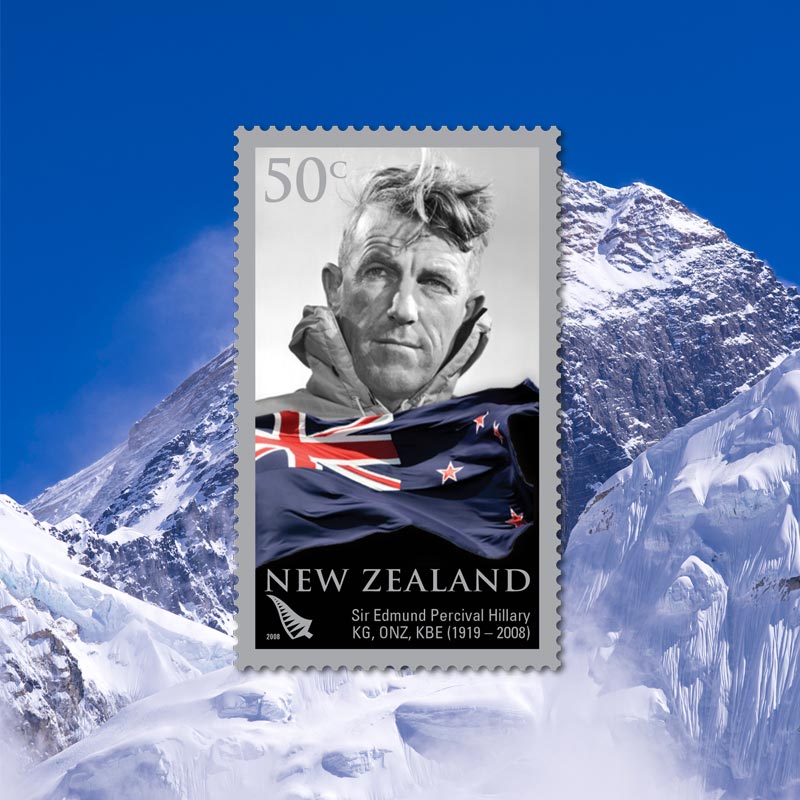 “It is not the mountain we conquer but ourselves.”
“Life’s a bit like mountaineering – never look down.”
“People do not decide to become extraordinary. They decide to accomplish extraordinary things.”
“Many people have been getting too casual about climbing Everest. I forecast a disaster many times.”
“There is precious little in civilisation to appeal to a yeti.”
“Human life is far more important than just getting to the top of a mountain.”
“While on top of Everest, I looked across the valley towards the great peak Makalu and mentally worked out a route about how it could be climbed. It showed me that even though I was standing on top of the world, it wasn’t the end of everything. I was still looking beyond to other interesting challenges.”
“It is not the mountain we conquer but ourselves.”
“Life’s a bit like mountaineering – never look down.”
“People do not decide to become extraordinary. They decide to accomplish extraordinary things.”
“Many people have been getting too casual about climbing Everest. I forecast a disaster many times.”
“There is precious little in civilisation to appeal to a yeti.”
“Human life is far more important than just getting to the top of a mountain.”
“While on top of Everest, I looked across the valley towards the great peak Makalu and mentally worked out a route about how it could be climbed. It showed me that even though I was standing on top of the world, it wasn’t the end of everything. I was still looking beyond to other interesting challenges.”
Hillary on the Commercialisation of Everest
In his later years, Hillary became critical of Everest’s commercialisation and the ruthless attitudes being demonstrated by those attempting to summit it. In 2006, he said that people “just want to get to the top [and] don’t give a damn for anybody else in distress”, adding that “All I can say is that in our expedition there was never any likelihood whatsoever if one member of the party was incapacitated that we would just leave him to die.” On companies trying to make a quick buck out of the mountains, Hillary once said “I really haven’t liked the commercialisation of mountaineering, particularly of Mt. Everest. By paying $65,000, you can be conducted to the summit by a couple of good guides.”Books By Edmund Hillary
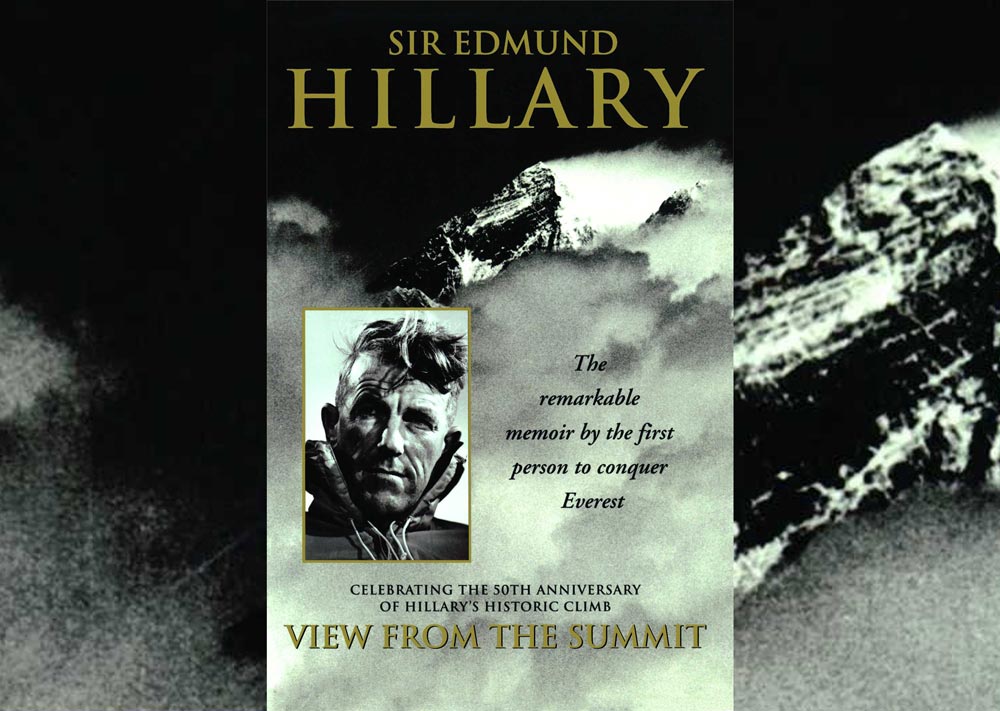 Over the course of his life, Hillary wrote many books. They are as follows: ‘High Adventure’ (1955), ‘East of Everest – An Account of the New Zealand Alpine Club Himalayan Expedition to the Barun Valley in 1954’ (1956), ‘The Crossing of Antarctica: The Commonwealth Transantarctic Expedition’ (1958), ‘The New Zealand Antarctic Expedition’ (1959), ‘No Latitude for Error’ (1961), ‘High In The Thin Cold Air’ (1962), ‘Schoolhouse In The Clouds’ (1965), ‘Nothing Venture, Nothing Win’ (1975), ‘From The Ocean To The Sky: Jet Boating Up The Ganges’ (1979), ‘Two Generations’ (1984), ‘View From The Summit: The Remarkable Memoir By The First Person To Conquer Everest’ (2000).
Over the course of his life, Hillary wrote many books. They are as follows: ‘High Adventure’ (1955), ‘East of Everest – An Account of the New Zealand Alpine Club Himalayan Expedition to the Barun Valley in 1954’ (1956), ‘The Crossing of Antarctica: The Commonwealth Transantarctic Expedition’ (1958), ‘The New Zealand Antarctic Expedition’ (1959), ‘No Latitude for Error’ (1961), ‘High In The Thin Cold Air’ (1962), ‘Schoolhouse In The Clouds’ (1965), ‘Nothing Venture, Nothing Win’ (1975), ‘From The Ocean To The Sky: Jet Boating Up The Ganges’ (1979), ‘Two Generations’ (1984), ‘View From The Summit: The Remarkable Memoir By The First Person To Conquer Everest’ (2000).

